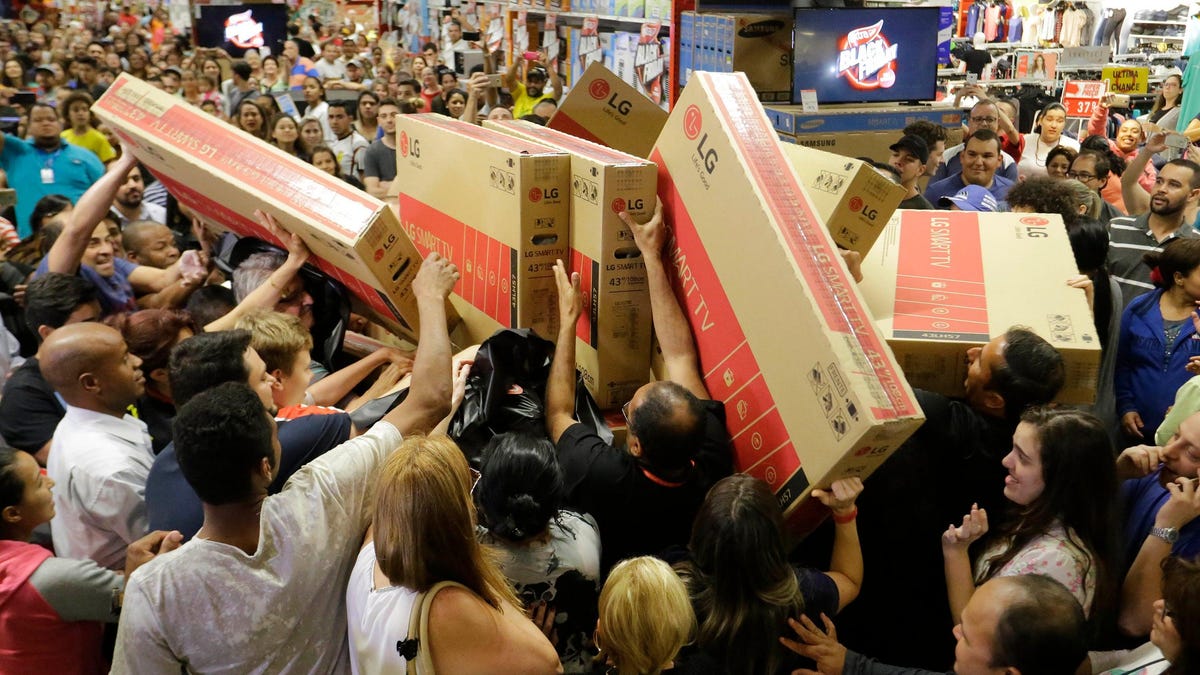A Slightly Depressing Story of Black Friday

Black Friday, the day after Thanksgiving, has become something of a holiday in the United States, marked by consumer discounts, shopping, and violence . Although its importance is gradually declining as online shopping grows, it is still a big deal in the US, with an estimated 166 million American consumers shopping during Black Friday weekend in 2022. But how did Black Friday start? What does all this mean ?
When was the first Black Friday?
“Black Friday” in the United States originally referred to the start of the Panic of 1869, when a collapse in gold prices devastated the national economy, but “Black Friday” as a description of the day after Thanksgiving dates back only to 1951. It first appeared in Factory Management and Maintenance magazine and referred to the number of employees who missed work the day after Thanksgiving. Around the same time, police in Philadelphia and Rochester began informally using “Black Friday” to describe the traffic jams and crowds that appeared in their cities as shoppers visited stores the day after Thanksgiving. The phrase gradually caught on—it was picked up by the national press in 1975, when the New York Times used the phrase to describe the day after Thanksgiving and the shopping and sales it brings.
But Black Friday existed before it even had a name. The day after Thanksgiving has been known to merchants as the start of the trading season since the late 1800s. Then and into the 20th century, retailers often sponsored Thanksgiving Day parades, which traditionally ended with Santa Claus appearing as if to say, “Now it’s time to do your Christmas shopping.” By unspoken agreement among retailers, Christmas ads rarely appeared until Thanksgiving, our grandparents’ day.
The problematic name of “Black Friday”
Calling a day “black” traditionally means a day of disaster or tragedy, leading some to propose different names for the day. In the early 1960s, Philadelphia retailers proposed the name “Big Friday”, a name that did not stick, leaving retailers with a weak explanation that the “black” in Black Friday referred to the black ink representing profit on the ledger (as if they not making money until the end of the year).
A more modern problem with the name is that Black Friday sales now last for several days, moving into Saturday, Sunday, Cyber Monday and even Tuesday, resulting in people saying things like: “Want to go shopping at Black Friday this Friday? Sunday?” So far, alternative titles like “Five Day Madness” and ” The Day I Get to Stomp on Someone to Save $8 on Nespresso ” haven’t caught on. But there’s hope here.
Black Thursday failure
The insatiable thirst for profit has led many retailers to try to move the start of Black Friday to Thursday. Beginning around 2011, some major retailers—Wal-Mart, Kmart, Toys R Us, and others—began opening on Thanksgiving. The trend never caught on, with many appalled that employees were forced to work on Thanksgiving or outraged that consumerism was intruding on a holiday meant to celebrate colonialism. By 2021, most major retailers were closed for Thanksgiving.
Cyber Monday: The Illegitimate Child of Black Friday
The term “Cyber Monday” describes the surge in online retail sales on the Monday after Thanksgiving, when workers return to the office and immediately go shopping online. It first appeared on November 28, 2005, in a Shop.org press release entitled “Cyber Monday is quickly becoming one of the biggest online shopping days of the year.” This may be the most influential press release ever written.
Buy Nothing Day: Black Friday’s Deadly Enemy
Anti-consumers have dubbed the day after Thanksgiving “Buy Nothing Day,” a day you can celebrate by doing charity or simply not buying anything. Created by artist Ted Dave for AdBusters magazine, the first Buy Nothing Day was celebrated in Canada in 1992. It is difficult to measure the success of an alternative holiday. Retail sales both online and in brick-and-mortar stores have risen sharply since 1992, suggesting that the Buy Nothing Day effect is negligible, but then again, it’s possible that big retailers are making millions less than if someone Twitter didn’t remind you not to go shopping every Black Friday.
Official number of deaths on Black Friday
Depending on how you measure it, between 1 and 17 people have died on Black Friday since 2010. Jdimitai Damour is the only person killed as a direct result of the Black Friday sale. A 34-year-old salesman was trampled to death by a growing mob at a WalMart on Long Island on Black Friday in 2008. When car crashes, shootings, retail worker suicides and fatal heart attacks are included, the Black Friday death toll rises to 17, with 125 injured.
Black Friday: a giant scam?
Critics of Black Friday point out that now is the best time to buy a new TV (the week before the Super Bowl ) and other items, and that the savings from Black Friday shopping are largely illusory—high-priced “door knockers” tend to sell out quickly, leaving items , by and large, cost the same as at any other time of the year.
Despite the hassle of shopping when it’s very crowded and the frustration of searching for deals that often don’t exist, Black Friday remains an unofficial holiday celebrated in one way or another by more than 100 million Americans. What this says about our country and capitalism is unclear, but I’m going to continue my personal post-Thanksgiving tradition of thinking about going out but playing video games instead.